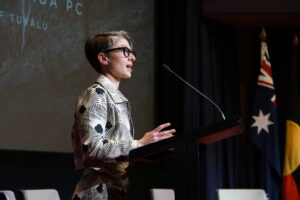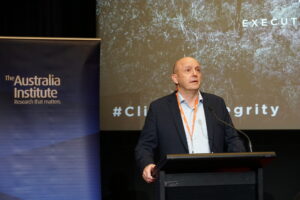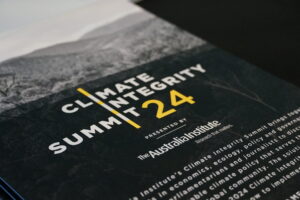by Richard Denniss
[Originally published on Guardian Australia, 20 March 2019]
Conservatives love subsidies because they know that they work. It’s why they spend $11bn subsidising private schools and $6bn subsidising private health insurance. It’s why they’re so keen to subsidise new coal mines and coal-fired power stations. And of course, it’s the reason that they are so obsessed with renewable energy subsidies — they know just how effective they would be.
There are those who think mining more coal is a good way to reduce greenhouse gas emissions and then there are those who don’t. I’m definitely one of the latter. And for those who want to see Australia’s emissions fall, there is no doubt that we need more subsidies for renewables.
These days, the rightwing commentators who once asserted “climate change isn’t real” typically prefer to argue that measures to tackle climate change are either ineffective, or too expensive. One of their favourite arguments is that if renewables are now cheaper than coal, then why should Australia subsidise renewables at all? It’s a good question, but there are plenty of good answers.
The first is that we need to keep subsidising renewables because we don’t have nearly enough of them and we are in a race against physics. The fact is, new build renewables with storage are now cheaper than new build coal, but that won’t cause existing coal-fired power stations to shut down, which is the only way to make emissions fall. Subsidies that encourage people to install solar and batteries on their homes however speed up the rate at which renewables squeeze the coal-fired power stations out of business.
While climate sceptics like to call the renewable energy target (RET) a subsidy, it is not. It’s a pollution control measure
Secondly, nearly all of the coal-fired power stations, and the transmission grids that they rely on, were built and subsidised by taxpayers. It wasn’t “market forces” that built the enormous network of coal-fired power stations and the electricity grids that provide nearly all Australians with electricity, it was the public sector. And the decision to string hundreds of kilometres of wires to link small towns to the national grid wasn’t based on economics, but equity. To suggest that all new investments in the electricity industry have to meet a criteria that the existing investments never did, provides an incredible advantage to the (recently privatised) electricity incumbents.
And finally, while climate sceptics like to call the renewable energy target (RET) a subsidy, it is not. It’s a pollution control measure. When politicians insist that cars have mufflers to reduce noise pollution, and air bags to reduce deaths, no one calls such measures a “subsidy” to the muffler industry or the air bag industry.
The purpose of the renewable energy target is to require the electricity industry to reduce the amount of pollution it generates. And while that has benefits to producers of renewable energy, such benefits are not a subsidy. On the contrary, the biggest subsidy in the Australian Energy Market is the ability of coal-fired power stations to dispose of millions of tonnes of carbon dioxide into our atmosphere for zero dollars. The building industry must pay to have rubble disposed of, the chemical industry is no longer free to dispose of its waste into our rivers, and anyone with an old TV knows you have to pay someone to take it off your hands. But for reasons that have nothing to do with economics, we continue to subsidise an industry that causes more climate change than any other, via the provision of free waste disposal services.
Subsidies are great when you want to encourage the production of something; that’s why we have subsidies for vaccinations, schools and superannuation contributions. But subsidising something that people want less of makes neither economic nor political sense. Luckily, we will have an election soon which, as always, provides voters with a clear opportunity to express for themselves what they want more of and what they want less of. That’s why elections matter.
For decades, Australians have been told that “the market” determined the shape of our economy and our community, but in recent years it’s become quite obvious that the so called “free marketeers” in the Coalition were simply pork barrel politicians in disguise.
Barnaby Joyce once elegantly summarised his approach to job creation and economic management when he declared that subsidised dam building was needed so that we could “get yellow things pushing dirt around so we can get this nation moving”.
When asked if he was concerned about the lack of any business plan or cost benefit analysis for his pet project, he defended the lack of any objective evidence with a question of his own: “is the Queensland Labor government, are they fluffers or doers? Are they going to get stuck into it? Are they going to have a go?”
Australia is one of the richest countries in the world and we live at the richest point in world history. There is no doubt that using taxpayers’ money to get “yellow things pushing dirt around” will create some jobs, but the more important question is, what kind of jobs? Should the “yellow things” be building new mines or new hospitals? Voters, through the politicians we elect, have enormous influence over the shape of our economy.
It’s not “the market” that made NSW Premier, Gladys Berejiklian, feel like spending $730m to tear down a stadium and replace it with a smaller one. It was not “the market” that made the resources minister, Matt Canavan, feel like giving $1 billion to Adani to help them build a new coal mine, and it was not “the market” that made the Queensland government veto it. The idea that “the markets” make all the big decisions about our society has eaten away our democracy.
It’s not “the market” that made the Finnish education system the best in the world, and it is not “the market” that has made our NBN one of the worst in the world. It’s the choices and priorities of those we elect – the willingness of individual politicians to “have a go”.
If Australia wants to reduce its greenhouse gas emissions, we have the technologies and the policies to do so at our finger tips. And of course if we don’t want to, we don’t have to, but the polls suggest we do. Time will tell whether our democratic structures are capable of responding to a problem like climate change — what we do know is that subsidies, regulation and taxes work.
Richard Denniss is chief economist at the Australia Institute. His new book, Dead Right: How Neoliberalism ate itself and what comes next, is out now
Between the Lines Newsletter
The biggest stories and the best analysis from the team at the Australia Institute, delivered to your inbox every fortnight.
You might also like
The Climate Crisis is an Integrity Crisis | Polly Hemming
I am starting my address to this year’s summit in the exact same way that I started last year’s address. Because it is just over a year since I delivered these same words, which aren’t actually my words. They are the words of our Climate Change Minister, and they provide a baseline of sorts for what progress has been made in that time.
Opening Remarks: Climate Integrity Summit | Richard Denniss
If we wanted to fix these things, we could. If you think that we need some complicated policy measure or some very expensive investment, you’ve been misled.
Highlights from the Climate Integrity Summit 2024
2023 has shown us a planet on the brink of collapse. Cyclones, heatwaves, catastrophic floods, fires and landslides have killed people, destroyed ecosystems and decimated communities. And yet Australia is still yet to repair all the homes lost in the Black Summer bushfires of 2020 or the devastating Lismore floods of 2017 and 2022. No



